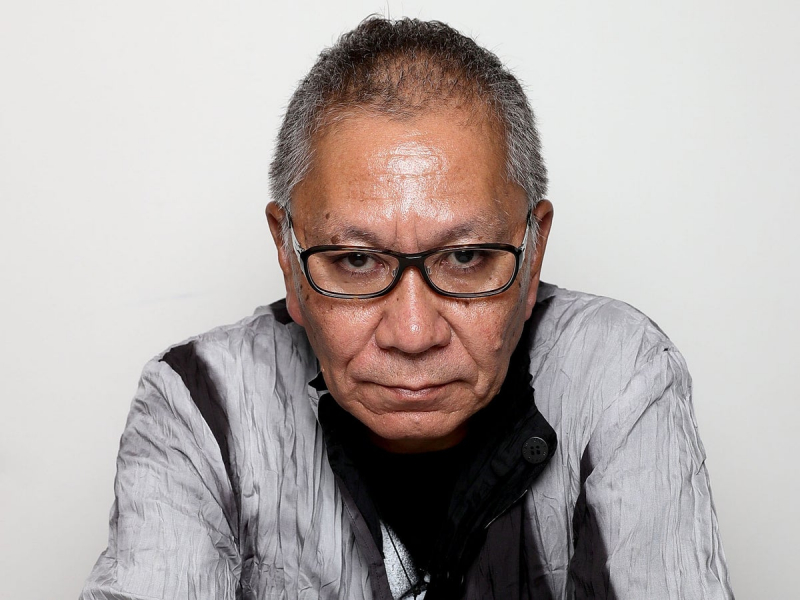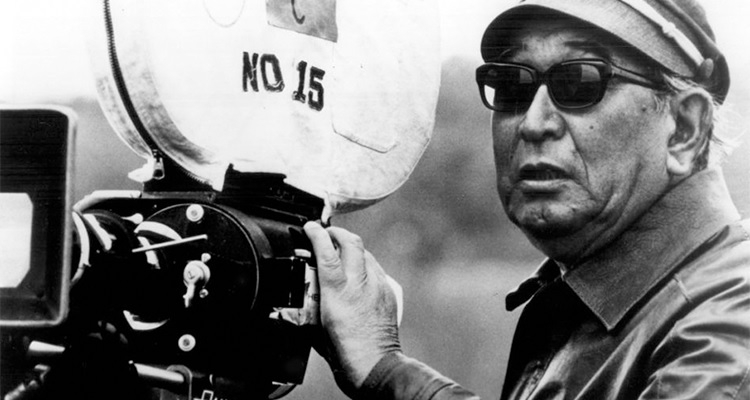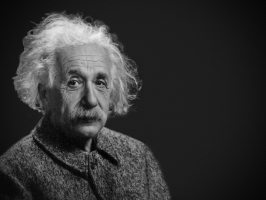Top 6 Greatest Japanese Filmmakers of All Time
Japan is one of the biggest movie industries in the world, whose triumphs started quite early - even during the World War. Wonder who are the greatest Japanese ... read more...filmmakers of all time? Dive into this Toplist compilation!
-
He might be the later comer in the field, but Hayao Miyazaki is definitely the most familiar name on the list. The man has spent years after years mastering his filmmaking skills, transporting the audience from all over the world to beautiful, astounding, and unique animations. His very first impact on the industry came in the form of "Nausicaa of The Wind Valleys", which is a film adaptation of a successful Japanese manga with the same title.
Littering his tales with hopeful and optimistic underdogs, Hayao Miyazaki shows a keen interest in the human spirit's resilience beyond adversity and challenges - a wonderful notion that's successfully delivered in the way Miyazaki tackles the prominent conflicts in his movies. Whether it's a story of some dragon henchmen with a tragic past, or an old, embittered witch trying to rescue her lover's heart; the director always wants to instill into our collective mind a sense of empathy and compassion, reminding us that they are our best weapons against monsters and devils.
Ever since the start of his career, Miyazaki simply had never released even just one bad movie, which is why we encourage our readers to dive further into his entire filmography. Trust us, your whole being will be refreshed by his positive perspectives and storytelling!
Year: 1941
Notable works: Spirited Away, My Neighbor Totoro, Princess Mononoke

Source: IndieWire 
Source: Oscars.org -
Yasujiro Ozu began his legendary career when the world was still familiar with silent films, until his very last color films in 1960. During his earlier years, Ozu often made short comedies for fun, before deciding to take a more serious turn in 1930. His most notable themes in the majority of his movies are family and marriage, especially the connection and relationship between different generations. His most well-received pictures entail Tokyo Story (1952), Late Spring (1948), and Autumn Afternoon (1961).
Commonly regarded as an influential and critical figure in the filmmaker segment, Yasujiro Ozu's pictures continue to receive praise and critical acclaim even after he has already passed away. In a 2012 poll organized by Sight and Sound, his movie "Tokyo Story" was chosen as the third best film in history by global critics. And in that very same poll, the movie was chosen as the best film ever by more than 350 filmmakers and directors in the world.
Ozu is lauded due to his exceptional, technical style and innovative narration content. The movies' styles become more prominent and distinctive in some of his later works - a theme not full-fledged until the post-war films. He refused to abide by Hollywood norms, proceeding to make films about the topics he resonates best with.
Years: 1903-1963
Notable works: Tokyo Story, Late Afternoon

Source: TCM 
Source: Cinema Escapist -
Takashi Miike is a well-recognized screenwriter, film producer, and filmmaker, directing more than 100 video, television, and theatrical productions ever since his fateful debut in 1990. His movies span across a broad array of genres, from bizarreness and violence to family-friendly and drama movies. Despite his success, some people view Takashi Miike as a somewhat controversial person in the Japanese contemporary cinema industry, and some of his movies are often criticized for extremely graphic violence.
Miike's very first pictures were mostly television productions, though, during this period, he also started directing some V-cinema direct-video releases. Thanks to the freedom offered by such productions, he still directs them even after he has achieved national success. These movies suffer from much less censorship and can air some riskier content than conventional movies.
Miike's very first theatrical debut only came in 1995 through the two movies Daisan no Gokudo (The Third Gangster) and Shinjuku Triad Society - the latter successfully gained attention from the general public. Both movies presented his very extreme styles, as well as some recurring themes, whose success allowed the director to participate in higher-budgeted projects.
Shinjuku Triad Society is the first movie in Miike's "Black Trilogy", a series that also features Ley Lines (1998) and Rainy Dogs (1996), nominated for a lot of awards at international festivals.
Born: 1960
Notable works: Shinjuku Triad Society, 13 Assassins, Ichi The Killer

Source: The Hollywood Reporter 
Source: The Independent -
Akira Kurosawa (born on 23 March 160 and died in 1998) was an amazing and influential Japanese painter and filmmaker, who directed more than 30 films in his long career of more than five decades. Akira Kurosawa is always considered among the most important figures in Japanese cinematic history.
The famous filmmaker entered the industry in 1937, after a brief period of working as a moderately-successful painter. He worked on various films as both a scriptwriter and a director assistant, before making his historical debut during the Second World War with "Sanshiro Sugata", a successful action movie.
When the war ended, he released Drunken Angel (in 1949), in which he cast the non- famous actor back then Toshiro Mifune in a leading role. The movie was a critical and financial triumph, cementing his reputation as among the greatest Japanese filmmakers. After their victory, the two continued to work together on more than 15 movies.
Then another milestone came: Rashomon, a movie that premiered in Toukyou, was declared the winner at 1951's Venice Festival. Thanks to the film's critical success, the doors for Western markets were opened to Japan for the very first time, leading to global fame for later generation's Japanese filmmakers.
Years: 1910 - 1998
Notable works: Rashomon, Seven Samurai, Ran

Source: Sense of Cinema 
Source: Akira Kurosawa info -
Sion Sono is a well-received author, poet, and filmmaker, most famous for his film Love Exposure (released in 2008). The man is among the greatest Japanese filmmakers of all time, being referred to as "among the most subversive filmmakers still working in the Japanese theaters". Some even call him "a Stakhanovite director" with idiosyncratic professions.
After he received a PIA-collaborated fellowship, Sion Sono produced his very first feature-length movie around 1990, called Jitensha Toiki (or Bicycle Sighs in English), which is a coming-of-age movie about the perfectionist Japan and the underachievers living in such a society. It's reported that he directed, co-wrote, and participated in that movie.
Then he returned to Japan, where he directed and wrote his second film, Heya (or The Room), a bizarre story about a killer who is finding a place to live in the doomed and bleak Tokyo district. It was released at Sundance Festival and also toured more than 50 festivals around the world, including famous festivals such as Rotterdam and Berlin Film Festivals.
A few years from then, he continued to direct successful works like "I am Keiko (1998), Utsushimi (2000), as well as a pink movie "Teacher of Sexual Plays: Modeling Vessel with Female Body" (released in 2000 also).
Born: 1961
Notable works: Love Exposure, Cold Fish

Source: FilmDoo 
Source: FICValdivia -
Shohei Imamura was among the greatest Japanese filmmakers of all time. Throughout his entire career as a director/filmmaker, his primary interest lies in detailed depictions of Japanese society's lower strata. As a key person in Japanese New Waves and continuing to produce films into the twenty-first century, Shohei Imamura is the first and only Japanese director to earn more than one Palme-d'or medal.
The famous actor grew up in a middle-class family. During the brief period after the war's end, he joined black markets to sell liquor and cigarettes, while studying Western histories at the University of Waseda. Still, the activities he spent the most time on are those that are related to politics and theaters. According to him, Rashomon (Akira Kurosawa's 1950 works) is his greatest inspiration, and he viewed the work as an implication of Japan's new expression of freedom after the war.
Imamura's films are not exactly the same as the directors he took inspiration from, but the most common thing among them is that they both included real-life Japanese society elements in the pictures. Shohei Imamura said, "I always have a lot of questions about Japanese people, since they are the only individuals I am qualified enough to describe."
Shohei Imamura expressed his surprise about his film's positive feedback overseas, doubting that the foreign audience actually understood what he was trying to convey.
Years: 1926-2009
Notable works: Vengeance is Mine, The Eel, The Insect Woman

Source: AllMovie 
Source: IMDB



























